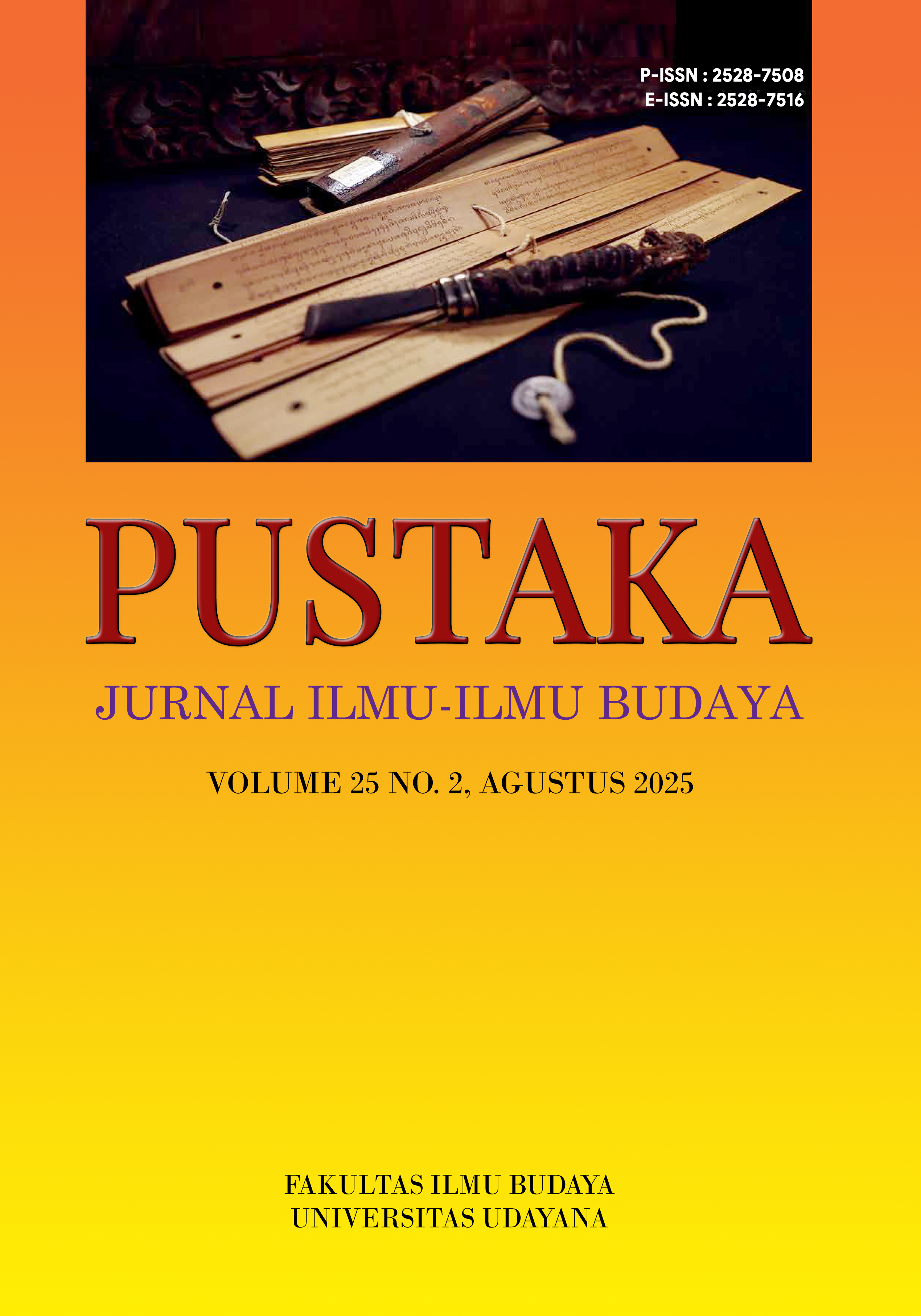Analisis Bahasa Figuratif dalam Manga Dr. Stone
DOI:
https://doi.org/10.24843/PJIIB.2025.v25.i02.p11Keywords:
figurative language, hiyu hyōgen, manga, Dr. StoneAbstract
Figurative language in discourse enriches communication by adding aesthetic and expressive elements. This study analyses the use of figurative language (比喩表現, hiyu hyōgen) in volumes 1–3 of the manga Dr. Stone using Nakamura Akira’s (1997) classification framework. A qualitative descriptive method was employed to identify and categorize figurative expressions. Out of 247 instances, nine types of figurative language were identified, with allegory (諷喩, fuuyu) being the most dominant (50%). The findings indicate that Dr. Stone employs figurative language for rhetorical effects and as a conceptual tool to simplify complex scientific concepts. This study contributes to understanding figurative language in science-based manga and offers insights into the relationship between linguistic creativity and scientific discourse in popular media.
References
Akari, Matsumura. 2018. “Digital Daijisen” https://dictionary.goo.ne.jp/jn/. Diakses pada 20 Maret 2023.
Alwi, Hasan. 2002. Kamus Besar Bahasa Indonesia. Jakarta: Balai Pustaka.
Anggreni, I., Sudipa, I., & Pratiwi, P. (2022). Figurative Language in Barack Obama's Speech at The United Nations General Assembly. Stilistika: Journal of Indonesian Language and Literature. https://doi.org/10.24843/stil.2022.v02.i01.p10.
Arafah, B., & Hasyim, M. (2019). Linguistic Functions of Emoji in Social Media Communication. Opcion, 25(24), 558-574.
Echols dan Shadily. 1996. Kamus Inggris Indonesia. Jakarta: Gramedia.
Endraswara, Suwardi. 2003. Metodologi Penelitian Sastra. Yogyakarta: Pustaka Widyatama.
Inagaki, Riichiro. Dr. Stone: volume 1-3. Tokyo: Shueisha Inc.
Keraf, Gorys. 2009. Diksi dan Gaya Bahasa. Jakarta: Gramedia.
Nakamura, Akari. 1997. Hiyuu Hyougen no Riron to Bunrui. Tokyo: ShueiShuppan
Prough, J., 2018. Reading Images, Visualizing Texts: Teaching Visual Analysis through Manga. ASIANetwork Exchange: A Journal for Asian Studies in the Liberal Arts, 25(2), pp.100–116. DOI: http://doi.org/10.16995/ane.270
Ronsmin, F. dan Utami, N.P.C.P., (2023). Figurative Language Used in Bible Old Testament. Pustaka: Jurnal Ilmu-ilmu Budaya, Vol 23 (1), 56 - 61.
Shiang, Tjhin Thian. 2019. Kamus Lengkap Terbaru Jepang-Indonesia Indonesia-Jepang. Jakarta: Gakushudo.
Taqdir (2025). Cultural Stereotypes in Foreign Language Textbooks: A Systematic Review of Visual Representation. Theory and Practice in Language Studies, Vol. 15, No. 6, pp. 1949-1958. https://doi.org/10.17507/tpls.1506.23
Tarigan, Henry Guntur. 2013. Pengajaran Gaya Bahasa. Bandung: Angkasa.
Trisiana, D., Ansas, V. N., & Lubis, A. H. (2024). Analisis metafora konseptual dalam puisi Indonesia dan Korea karya Chairil Anwar dan Seo Jeong-ju. Diglosia: Jurnal Kajian Bahasa, Sastra, Dan Pengajarannya, 7(3), 465-476. https://doi.org/10.30872/diglosia.v7i3.1001
Yusri, M. H., & Taqdir, T. (2025). Figurative Language and Its Emotional Impact in YOASOBI’s The Book 1 Lyrics: A Semantic Approach. NAWA: Journal of Japanese Studies, 2(1), 20–28. https://doi.org/10.69908/nawa.v2i1.43302
Walidin, W., Saifullah, & Tabrani. 2015. Metodologi penelitian kualitatif & grounded theory. FTK Ar-Raniry Press.

